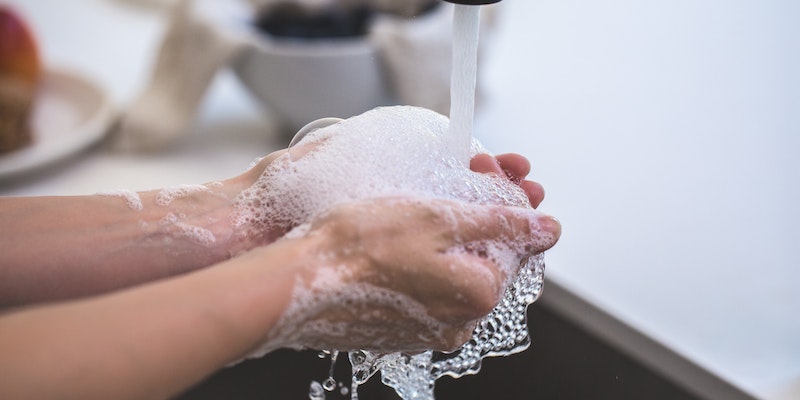In the search for cleanliness and hygiene, many public spaces have adopted hot-air hand dryers as a hygienic alternative to paper towels. These sleek machines promise quick drying and an eco-friendly solution. However, beneath the convenience lies a bacterial horror that may make you rethink your hand-drying choices. Let’s break down the myth and reveal the facts. Get yourself ready!
What is This Invisible Monster?
Hot-air hand dryers may seem innocuous, but studies have revealed a disconcerting truth—they can be breeding grounds for bacteria. Yes, that’s true! The warm, moist environment inside these devices becomes an ideal habitat for microbes, including potentially harmful ones.
When you wash your hands and use a hot-air hand dryer, you might assume you're getting rid of germs. Isn’t it? But in reality, the airflow from these machines can stir up bacteria already present in the environment and deposit them onto your freshly washed hands. It's like a microscopic storm of potential pathogens. Now, that seems scary!
What is the Jetstream Effect?
One of the culprits behind the bacterial horror is the high-velocity air jet used in these dryers. While it may speed up the drying process, it also propels bacteria from various surfaces, including the insides of the dryer itself, onto your hands. Imagine drying your hands with a gust of invisible bacteria—definitely not what you signed up for.
Scientific investigations have delved into the bacterial contamination associated with hot-air hand dryers. Research conducted at renowned institutions has found elevated bacterial counts in the vicinity of these devices, with the potential to spread harmful microbes.
What is the Solution?
If the bacterial horror of hot-air hand dryers has you concerned, don't worry; there are alternatives. Consider using paper towels or, when available, air dryers with HEPA filters. Paper towels, though traditional, have proven effective at drying hands without the added risk of bacterial contamination. Let’s briefly explain all these alternatives.
1. Paper Towels
One of the most common alternatives, paper towels, offers quick and effective hand drying. They are disposable and convenient, but their use generates waste. However, if sourced sustainably and recycled properly, the environmental impact can be minimized. Regular restocking is necessary to ensure availability.
2. Jet Air Dryers with HEPA Filters
High-speed jet air dryers come equipped with HEPA filters, which can trap bacteria and particles, providing a more hygienic hand-drying option. Despite their efficiency, these dryers can be noisy, and their availability may be limited compared to traditional dryers.
3. Cotton Towels
Reusable and gentle on the hands, cotton towels offer a more traditional and sustainable option. However, they require regular washing, making them less practical for high-traffic public restrooms where quick turnover is essential.
4. Hand Towels
Similar to paper towels but reusable, hand towels can be a more environmentally friendly option. They require laundering, adding to the maintenance workload. While they may not be as efficient for quick drying, they offer a softer and more luxurious hand-drying experience.
5. Single-Use Towels Made from Recycled Materials
Combining the convenience of single use with eco-friendliness, towels made from recycled materials are gaining popularity. The manufacturing process still has an environmental impact, but it's generally lower than non-recycled options.
6. Infrared Hand Dryers
These dryers are energy-efficient and operate without physical contact, reducing the risk of surface contamination. While they may not be as fast as traditional hot-air dryers, the initial installation cost can be a consideration for some establishments.
7. Air Blade Hand Dryers
Recognized for their sleek design and high-speed air streams, air blade hand dryers offer quick and efficient drying. However, they can be noisy, and there is a potential, though lower than traditional dryers, for dispersing bacteria into the surrounding environment.
8. Disposable Hand Wipes
Convenient for on-the-go use, disposable hand wipes are individually packaged for easy accessibility. However, their use generates waste, and they may not be as effective for large-scale use compared to other options.
How to Dry Your Hands Effectively?

Drying your hands effectively is a crucial step in maintaining good hygiene. Here's a guide to ensure you're doing it right:
1. Wash Hands Thoroughly
Before drying your hands, make sure you've washed them thoroughly with soap and water for at least 20 seconds. This step removes dirt, bacteria, and viruses from your hands.
2. Shake Excess Water Off
After rinsing, give your hands a gentle shake to remove excess water. This helps reduce the time needed for drying.
3. Choose an Effective Drying Method
Select a drying method that suits your preference and the available options. Common methods include. Use them to pat your hands dry, starting at the fingertips and moving towards the wrists.
Hold your hands under the air stream for the recommended duration. Pat your hands dry, ensuring all areas are covered. Follow the instructions provided, usually involving placing your hands under the dryer for a specific time.
4. Focus on Friction:
Regardless of the drying method, create friction between your hands to enhance the drying process. Rub your hands together briskly to remove the remaining moisture.
5. Check for Dryness:
Confirm that your hands are completely dry before leaving the restroom or kitchen. Wet or damp hands can harbor bacteria and may lead to the spread of germs.
6. Avoid Touching Surfaces After Drying:
Once your hands are dry, use a paper towel or tissue to turn off faucets or open doors, especially in public restrooms. This minimizes the risk of recontamination.
7. Maintain Regular Hand Hygiene:
Drying your hands is just one part of the hand hygiene process. Remember to regularly wash your hands, especially before handling food, after using the restroom, or when coming into contact with potentially contaminated surfaces.
Conclusion
While the convenience of hot-air hand dryers is undeniable, it's crucial to be aware of the bacterial horror that lurks within. Opting for alternative hand-drying methods might be a small change in your routine, but it can make a significant difference in minimizing the risk of spreading bacteria. Your hands deserve to be clean and free from microscopic organisms, so choose your hand-drying method wisely.






